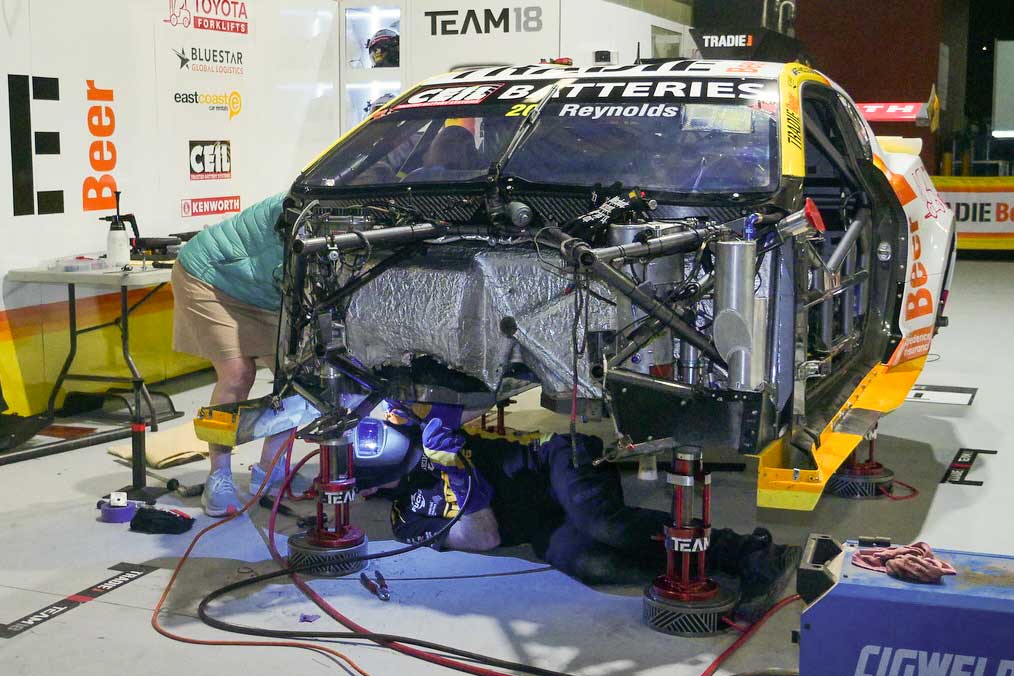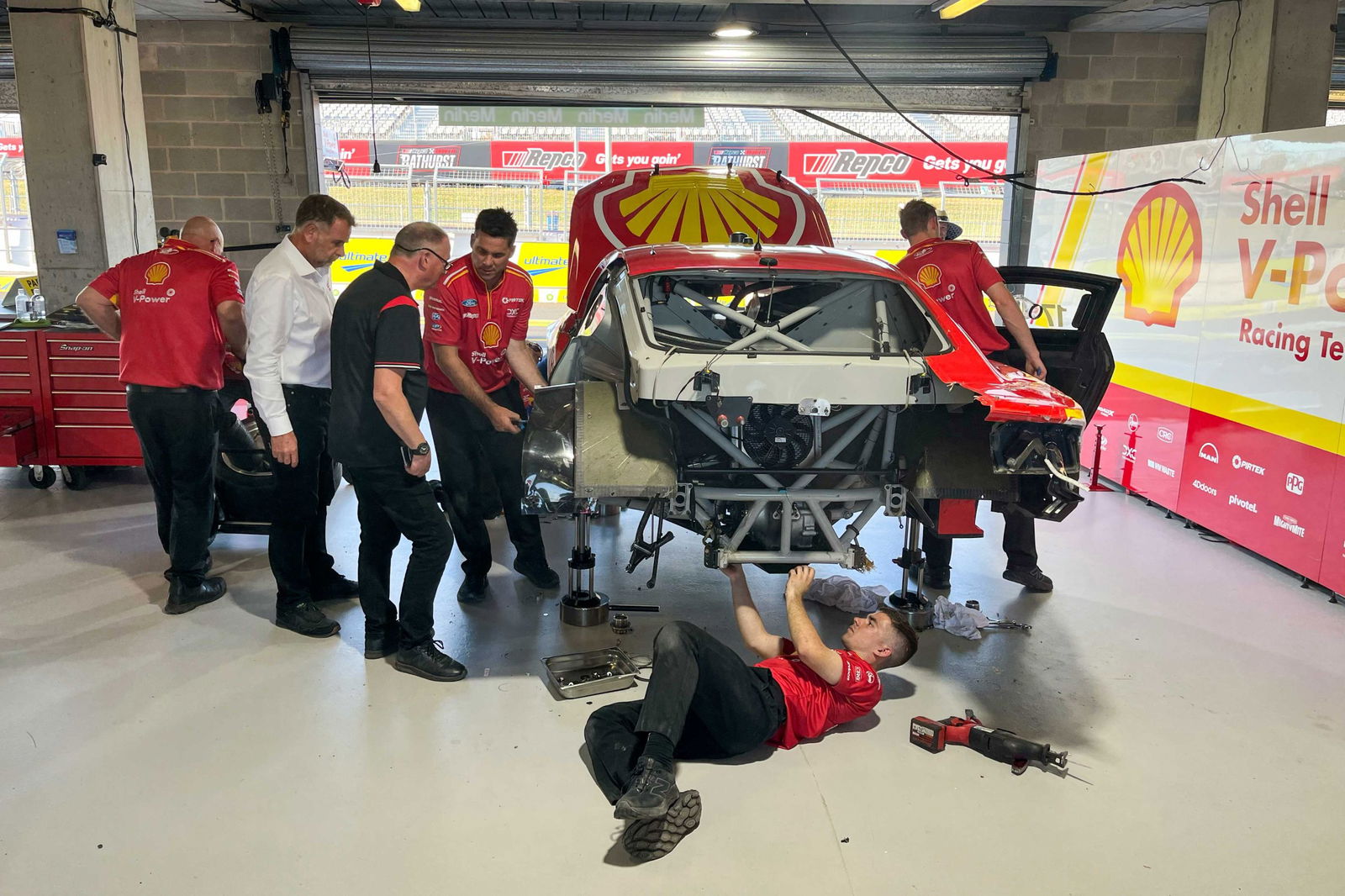

The build-up to the Great Race was rocked by a succession of dramatic shunts, headlined by David Reynolds and Will Davison’s spills on the way into The Dipper during qualifying.
Both cars were the subject of overnight rebuilds and returned to the track the following morning, although Reynolds’ Camaro has now been parked after struggling in the Great Race.
Repairability was a big talking point from the moment the Gen3 car debuted at the 2023 Newcastle 500.
There James Courtney had a seemingly innocuous head-on bump with the barriers during a Top 10 Shootout that not only ruled his car out of the race but required a trip to Queensland to fix.
“Every time you crash a car, you learn from it, so we’ll take some more learnings out of this,” Supercars’ motorsport manager Tim Edwards told Speedcafe at Bathurst.
“But you’ve also got to deal with the fact we’re now up to [45] in terms of the number of Gen3 chassis that have been built.
“I think the centre section in particular, there are some tweaks that can be made to it, but it’ll be ‘Gen3.2’ or ‘Gen4’ or whatever it ends up being where you take the learnings in full and potentially design things a little bit differently.
“Fundamentally you can’t change some of the things because they’re hardcoded in the car. There are some areas where you’ve got to live with it, but we’ll always learn.
“We’ve got a heap of photos of what happened and at the next TWG (Technical Working Group) meeting they’ll be shared with Jeromy (Moore) and people more intimately involved in the chassis design.
“After Courtney’s one from Newcastle last year there was some further gusseting put around that point, maybe we can do some more of that to another level.”
All the Gen3 cars that were crashed on the weekend were able to be repaired at the circuit.
Edwards noted that the Gen3 design of having bolt-on front and rear clips is “a huge advantage” over the previous generation cars, citing DJR’s rear-end repair as evidence.

Reynolds’ Camaro received a new front-end, although also suffered damage further inboard that needed to be straightened.
“With the Car of the Future, what you saw with the DJR car, the whole rear birdcage that sits around the transaxle, with the previous generation car, every team bought every one of those individual tubes in the truck and a jig and you cut bars out and welded new bars in,” he said.
“That was the quickest part of the repair for DJR. They literally pulled the transaxle out, undid the six bolts that hold it to the back of the chassis and bolted a new clip on and bolted the transaxle back in. The rear repair was absolutely seamless.
“It’s just if you get that wrong, acute angle at the front, yes it damages the front clip and then also some of that load can transfer into the main chassis. That was a big accident and right at what you’d argue the wrong angle.
“Even if it’d been more front-on, then you would have shared it a bit across both sides. But it sort of punched it on that 45-degree angle.”
The volume of accidents during the lead-up to the Great Race came as a surprise.
In addition to Reynolds and Davison’s qualifying bingles, Triple Eight’s Scott Pye, Matt Stone Racing duo Cameron Crick and Dylan O’Keeffe and Blanchard Racing Team’s Aaron Love were among others to come unstuck during practice sessions.
Asked why the pre-race sessions featured such carnage, Edwards said: “I don’t think there’s an answer to that question because I don’t honestly know.
“Everyone’s pushing hard. You’re always on a knife-edge and we haven’t got the downforce we had with the previous generation car.
“It’s going to be interesting next year because the intention is to come back with the tyre tested [at Bathurst on Friday morning], so that will have a different dynamic to it as well.”
Dunlop tested a new soft tyre that is intended to give a high grip level without the degradation that usually comes with the softer compounds.
The Bathurst 1000 was run on the hard tyre this year after a move to the soft in 2023 proved unpopular.




















Discussion about this post